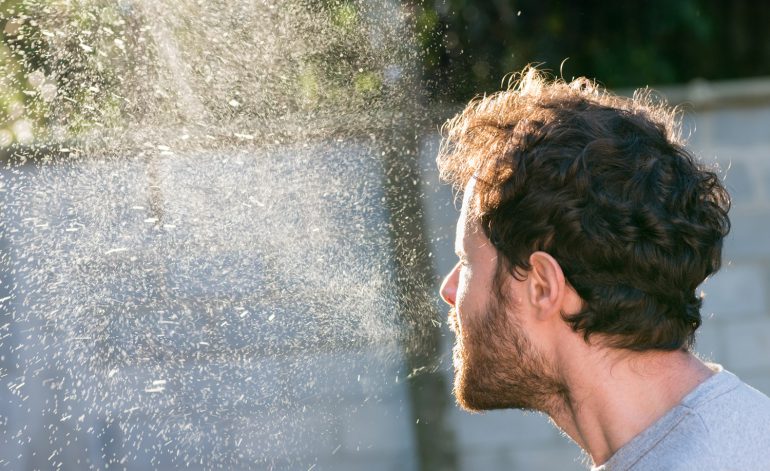Sivaramakrishnan “Bala” Balachandar, a professor in the Department of Mechanical and Aerospace Engineering at UF Wertheim, teaches about aerosols, multiphase flows, computational fluid science and more.
On Wednesday, Balachandar answered questions on Reddit’s Ask Science thread about how far infectious droplets could carry a virus in host-to-host transmission. Balachandar is currently leading a study with an international team of researchers who are updating science and the social distancing guidelines that are commonly in place for public spaces during COVID-19. Check out some of his answers to questions about his expertise.
Read more about Dr. Balachandar’s study on UF Explore.
Q: Does keeping 6 ft of social distance and wearing a mask when someone sneezes prevent the spread of the virus?
A: Yes, social distancing helps – the longer the distance, the lower the chances of infection. A mask worn by an infected person, when they talk, cough or sneeze is very effective in cutting down the number of droplets (and viruses) that they eject into the air.
Q: Would air conditioning increase transmission rates due to turbulent air?
A: Turbulence or any kind of mixing will mix things up. This means any airborne aerosol can spread over the entire room or more, due to turbulent mixing. This does two things (I) the aerosol is all over the room, but (II) it is far more diluted than when it was located as a small region of a puff.
Q: How does it work when its windy vs no air movement? If my friend was 10 feet away from me, but sneezed into a fan pointed at me – six feet wouldn’t help much. So what’s with all the advice to go outside? If the breeze is 20 mph, isn’t it possible that viruses are coming towards me at 20 mph?
A: Great question. If a person sneezes and if the breeze brings it to your face standing 10 feet away, that is bad. But note that you need to be standing directly downwind of that person. In general, a vigorous breeze will not only move the ejected puff of air downwind, but it will also tend to mix it and therefore dilute it. This dilution is good since every breath we take will have a far less chance of breathing in a bug.
Q: Would warmer air make the aerosol less ‘buoyant’ and and therefore fall out of air suspension quicker?
A: Yes. The temperature difference between the exhaled air and the ambient is the cause of buoyancy. Exhaled air is typically hotter and therefore rises up with the smaller droplet nuclei or aerosols in it. If the outside air is hot then the exhaled puff may not rise up. But we find the buoyancy effect to be quite weak in general. The temperature may play a bigger role in droplet evaporation.
Q: Is transmission a risk when simply passing by another person outdoors, when both parties are mobile?
A: The risk should be typically lower outside since there is breeze that tends to mix the exhaled puff quickly. If a sick person sneezes outdoors, the puff of air moves forward and begins to spread with the droplet nuclei suspended in it. It beings to dilute fast due to mixing. So now it is the question of chance – what is the probability of another person happening to walk right into this? Generally slim. As a general rule keep some distance away – I do this when I jog outdoors – keep a distance from other joggers and walkers.
Q: Is six feet enough if everyone wears a surgical mask correctly, even in confined spaces e.g. transit?
A: In general, it may be a reasonable safe distance. But the point of our article was that it is not always the case. If a sick person sneezes in an unventilated room the chances of the droplet nuclei spreading over the entire room, which may be bigger than six feet, is quite high. The sick person wearing a mask is very effective since it blocks most of the droplets (but some small ones do get through the mask). Ordinary cloth mask is little less effective for the receiving person since it does not block nuclei (or aerosol particles) that are a few microns in size or smaller.
Q: Has there not been a peer-reviewed study on this previously? I’m actually very curious because during this pandemic it seems like these sort of studies were never done and it blows my mind.
A: There were similar studies in the past. Droplet spreading has been studied widely in the context of fuel spray. Every research on the shoulders of others who have studied the problem before, but hopefully (we are) making a new contribution of relevance and thus advancing the science.

